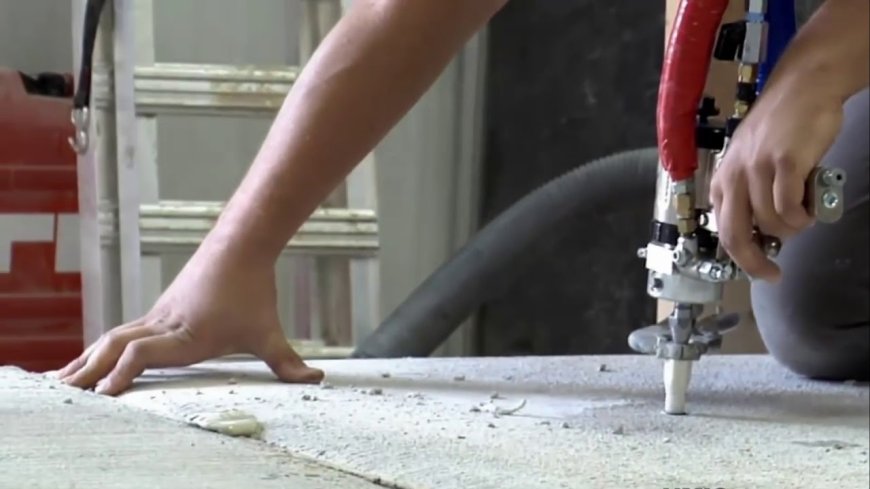Concrete Lifting vs. Replacement: Which is More Economical?

When it comes to maintaining or renovating concrete surfaces, homeowners often face a critical decision: should they lift the existing concrete or replace it entirely? Both options have their merits and drawbacks, but understanding the financial implications and long-term benefits can help homeowners make informed choices. This article delves into the pros and cons of concrete lifting versus replacement, allowing readers to determine the most economical route for their specific needs.
Understanding Concrete Issues
Before diving into the options, it's important to identify common issues that affect concrete. Over time, concrete can develop cracks, become uneven, or sink due to soil erosion, moisture issues, or poor installation. These problems can lead to safety hazards, aesthetic concerns, and decreased property value. Addressing these issues promptly is crucial for maintaining the integrity of a home.
What is Concrete Lifting?
Concrete lifting, also known as slab jacking or mudjacking, is a process that involves injecting a material—typically a mixture of cement, soil, and additives—beneath the sunken concrete. This mixture fills voids and lifts the concrete back to its original level. It is a cost-effective method that can restore functionality and safety to concrete surfaces without the need for complete replacement.
Advantages of Concrete Lifting
-
Cost-Effective: Concrete lifting is often significantly cheaper than full replacement. The cost savings can be substantial, making it an attractive option for homeowners on a budget.
-
Quick Process: The lifting process is generally quicker than replacing concrete. Most projects can be completed in just a few hours, allowing homeowners to use the area almost immediately afterward.
-
Minimal Disruption: Since lifting typically requires less equipment and fewer labor hours, it creates less disruption to the surrounding landscape and home environment.
-
Eco-Friendly: Lifting keeps the existing concrete in place, reducing waste and the need for new materials. This environmentally conscious choice can be appealing to many homeowners.
Disadvantages of Concrete Lifting
-
Limited Longevity: While lifting can provide immediate results, it may not be a permanent solution, especially if the underlying issues are not addressed. Over time, the lifted concrete may sink again.
-
Not Suitable for All Cases: If the concrete is severely cracked or the underlying soil issues are extensive, lifting may not be the best option. In such cases, replacement might be necessary.
What is Concrete Replacement?
Concrete replacement involves removing the damaged or uneven concrete and pouring new concrete in its place. This method is often seen as a long-term solution to severe concrete problems.
Advantages of Concrete Replacement
-
Durability: New concrete can provide a fresh start, ensuring that the surface is level and free from previous issues. A properly installed replacement can last for decades with the right care.
-
Addressing Underlying Problems: Replacement allows homeowners to address any underlying issues, such as poor drainage or soil problems, ensuring a more stable foundation for the new concrete.
-
Aesthetic Improvements: New concrete offers an opportunity for homeowners to improve the appearance of their surfaces, incorporating design features or decorative finishes that may not have been possible with the old concrete.
Disadvantages of Concrete Replacement
-
Higher Costs: Replacement can be significantly more expensive than lifting. Costs include labor, materials, and potential landscaping or structural adjustments.
-
Longer Installation Time: The replacement process typically takes longer than lifting, meaning homeowners may need to plan for extended disruption.
-
More Waste: Removing old concrete generates waste, which can have negative environmental implications.
Cost Comparison
When evaluating the economic aspects of concrete lifting versus replacement, several factors come into play:
Initial Costs
-
Concrete Lifting: Generally ranges from $300 to $1,500, depending on the size of the area and the extent of the lifting required.
-
Concrete Replacement: Costs can range from $1,500 to $5,000 or more, depending on the area, materials used, and local labor rates.
Long-Term Costs
While lifting may save money initially, it's essential to consider potential future repairs. If the underlying issues are not resolved, homeowners might face additional costs to re-lift the concrete or, eventually, replace it.
When to Choose Each Option
The decision between concrete lifting and replacement often depends on the specific circumstances:
-
Choose Concrete Lifting if: The concrete is only slightly sunken, the damage is minimal, and the underlying soil issues are manageable.
-
Choose Concrete Replacement if: The concrete is severely cracked, sinking significantly, or if there's a need to address underlying soil or drainage issues.
FAQs About Concrete Lifting and Replacement
1. How long does concrete lifting last?
Lifting can last several years, but its longevity depends on the underlying issues and the quality of the installation.
2. Can I perform concrete lifting myself?
While DIY kits are available, it is recommended to hire professionals for the best results and safety.
3. What are signs that I need concrete replacement?
Signs include large cracks, extensive sinking, or issues with drainage that lifting cannot address.
4. Is concrete lifting safe for my home?
Yes, when performed by experienced professionals, concrete lifting is a safe and effective solution.
5. How do I find a reliable contractor for these services?
Research local companies, read reviews, and ask for recommendations to find a reputable contractor.
Conclusion
Deciding between concrete lifting and replacement involves considering both immediate costs and long-term benefits. Concrete lifting can be an economical and effective solution for minor issues, while replacement offers durability and the chance to address underlying problems. Homeowners in Baton Rouge and nearby areas can explore these options with the guidance of professionals. For expert assistance, they can contact Polyco Spray Foam at 225-416-5896. Serving areas including Prairieville, Gonzales, Denham Springs, Walker, Monticello, Merry Dale, Westminster, Shenandoah, Village St. George, Zachary, Oak Hills, and throughout Louisiana, they provide reliable solutions for all concrete needs.
What's Your Reaction?







.jpg)







![Noots Focus Reviews [Truth Exposed 2025]!](https://news.bangboxonline.com/uploads/images/202501/image_430x256_678e3b94881a1.jpg)
![Vivalis Male Enhancement: The Must-Know Ingredients [2025 Update]](https://news.bangboxonline.com/uploads/images/202501/image_430x256_678e3b54e396c.jpg)








![Try Updated Microsoft MB-310 Exam Dumps: Ideal For Best Preparation [2024]](https://news.bangboxonline.com/uploads/images/202410/image_430x256_6704d338a8922.jpg)